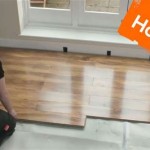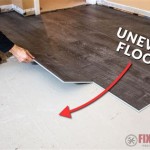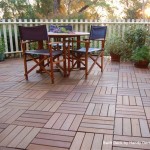Rainbow Eucalyptus Wood Flooring: A Unique and Sustainable Choice
Rainbow Eucalyptus wood flooring represents a distinctive and increasingly popular option for homeowners and designers seeking both visual appeal and environmentally conscious materials. Derived from the *Eucalyptus deglupta* tree, primarily found in the tropical regions of the Philippines, Indonesia, and Papua New Guinea, this flooring showcases a natural spectrum of colors, setting it apart from conventional wood flooring options. The wood’s remarkable coloration arises from the shedding of its bark in patches throughout the year, revealing the vibrant green inner bark which gradually matures into hues of blue, purple, orange, and eventually maroon as it is exposed to air and sunlight. This process results in a naturally multi-toned aesthetic that is both aesthetically striking and inherently unique across each plank.
The selection of Rainbow Eucalyptus for flooring applications is driven by a confluence of factors, including its inherent beauty, its sustainable sourcing potential, and its physical properties which, while not as consistently hard as some traditional hardwoods, are generally suitable for residential and some light commercial uses. Understanding the sources, characteristics, and proper installation techniques is essential for anyone considering Rainbow Eucalyptus wood flooring for their project.
Understanding the Origin and Sustainability of Rainbow Eucalyptus
The *Eucalyptus deglupta*, the source of Rainbow Eucalyptus wood, is a fast-growing tree species often cultivated in plantations for pulpwood and, increasingly, for timber suitable for flooring. Its rapid growth rate makes it a potentially sustainable source of wood, particularly when managed responsibly. However, potential consumers must be aware of the origins of their wood and ensure that it comes from certified sustainable sources. Organizations such as the Forest Stewardship Council (FSC) offer certification for responsibly managed forests, providing reassurance that the wood is harvested in a way that minimizes environmental impact and promotes biodiversity. Purchasing FSC-certified Rainbow Eucalyptus wood flooring helps support sustainable forestry practices and minimizes deforestation.
The sustainability of Rainbow Eucalyptus extends beyond responsible harvesting. Because it's a relatively fast-growing tree, it sequesters carbon dioxide from the atmosphere at a higher rate than older, slower-growing trees. When the wood is used in long-lasting applications like flooring, the carbon remains locked within the material, further contributing to its environmental benefits. However, transportation of the wood from its native regions to processing and distribution centers can contribute to carbon emissions. Optimizing transportation logistics and supporting local or regional suppliers can help minimize this impact.
The propagation of Rainbow Eucalyptus also faces environmental considerations. In some regions, planting this species outside of its native habitat could disrupt local ecosystems. Therefore, it is critical to ensure that the Rainbow Eucalyptus used for flooring originates from plantations specifically managed for sustainable timber production or areas where the species is already established and not invasive.
Physical Properties and Characteristics of Rainbow Eucalyptus Wood Flooring
Rainbow Eucalyptus wood boasts a medium density and a Janka hardness rating that falls within a moderate range, typically suitable for residential use. The Janka hardness test measures the resistance of wood to indentation; Rainbow Eucalyptus generally scores lower than hardwoods like oak or maple, but higher than softer woods like pine. This means it is durable enough to withstand everyday wear and tear in most homes, but it is more susceptible to scratches and dents than harder wood species. The specific hardness can vary depending on the growing conditions and the age of the tree.
The wood's grain pattern is typically straight to interlocked, adding to its visual complexity. The texture ranges from medium to coarse. The natural oils present in the wood contribute to its moderate resistance to decay and insect infestation, although it is still recommended to treat the wood with appropriate sealants and finishes to ensure longevity, particularly in damp or humid environments.
One of the most significant characteristics of Rainbow Eucalyptus is its inherent color variation. As mentioned earlier, the wood's striking rainbow hues are a natural phenomenon, arising from the process of bark shedding. This means that no two planks will be exactly alike, creating a floor with a unique and dynamic appearance. The intensity of the colors can vary depending on the individual tree and the specific section of the trunk used, leading to a wide range of aesthetic possibilities. This natural variation is a significant selling point for those seeking a truly one-of-a-kind flooring solution, but it also requires careful consideration during installation to ensure a balanced and aesthetically pleasing final product.
Regarding stability, Rainbow Eucalyptus is moderately stable compared to some other wood species. It is susceptible to expansion and contraction with changes in humidity. Therefore, proper acclimatization before installation is crucial. This involves allowing the wood to adjust to the ambient temperature and humidity of the installation environment for several days or even weeks before installation to minimize warping, cupping, or gapping after installation. Proper acclimation is paramount for the longevity and performance of the flooring.
Installation and Maintenance Considerations
Installing Rainbow Eucalyptus flooring is similar to installing other types of solid or engineered wood flooring. The subfloor must be level, clean, and dry before installation begins. The use of a moisture meter to check the moisture content of both the subfloor and the wood is highly recommended to ensure proper acclimatization and prevent future problems. A moisture barrier should be installed between the subfloor and the flooring to further protect against moisture damage.
Rainbow Eucalyptus flooring can be installed using several methods, including nail-down, glue-down, or floating installations. Nail-down installation is typically used for solid wood flooring, while glue-down or floating installations are more commonly used for engineered wood flooring. The choice of installation method will depend on the specific type of flooring and the characteristics of the subfloor. It is vital to follow the manufacturer's instructions carefully to ensure a successful installation. A professional installer with experience working with exotic woods can provide valuable expertise and minimize the risk of errors.
Maintaining Rainbow Eucalyptus flooring is relatively straightforward. Regular sweeping or vacuuming is essential to remove dirt and debris that can scratch the surface. Damp mopping with a pH-neutral wood floor cleaner is recommended for more thorough cleaning. Avoid using excessive water, as this can damage the wood over time. Applying a protective finish, such as polyurethane or lacquer, can help to protect the wood from scratches, stains, and moisture. The finish should be reapplied periodically as needed to maintain its protective properties. Area rugs can also be used in high-traffic areas to minimize wear and tear.
Addressing scratches and dents promptly is important to prevent further damage. Small scratches can often be repaired with a touch-up marker or a wood stain that matches the color of the flooring. Deeper scratches or dents may require sanding and refinishing the affected area or even replacing the damaged plank. Preventive measures, such as using furniture pads under heavy objects and avoiding wearing shoes with sharp heels, can help minimize the risk of scratches and dents.
Finally, climate control within the home will significantly impact the lifespan and appearance of Rainbow Eucalyptus floors. Maintaining stable humidity levels will prevent the wood from expanding and contracting excessively, minimizing the risk of warping, cupping, and gapping. A humidifier or dehumidifier can be used to regulate humidity levels as needed. Direct sunlight can also cause the wood to fade over time, so using curtains or blinds to shield the flooring from direct sunlight is recommended.
Choosing Rainbow Eucalyptus wood flooring offers a unique and potentially sustainable flooring option. Understanding the wood's origin, physical properties, and installation and maintenance requirements is crucial to ensuring its longevity and beauty for years to come.

Rainbow Eucalyptus Flooring Wood

Rainbow Eucalyptus Flooring Google Search Best

Rainbow Eucalyptus Discount Flooring Depot Blog
What Does The Inside Of A Rainbow Eucalyptus Tree Look Like Quora
What Does The Inside Of A Rainbow Eucalyptus Tree Look Like Quora
What Does The Inside Of A Rainbow Eucalyptus Tree Look Like Quora

Rainbow Eucalyptus Tree Outdoor Rug By Vadasyva Society6

Wood Floor Of The Week Bolivian Canarywood On Fire Business

Rainbow Eucalyptus Discount Flooring Depot Blog
Fsc Certified Recycled Content Flooring From Ecotimber Multifamily Executive
Related Posts








